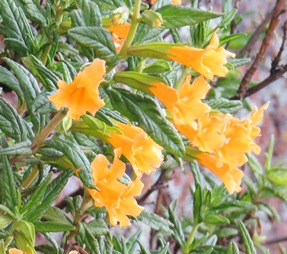
Objective: Ensure that all personnel that work in or visit the nursery consistently follow phytosanitary practices.
What you need to know: Everyone who works in the nursery needs to understand how Phytophthora spreads and how to avoid spreading it. For many, this will require substantial changes in thinking about how they go about tasks in the nursery. Personal protective equipment may need to be worn for some sanitizing procedures. Personal protective equipment that is reused needs to be cleaned and/or sanitized as appropriate. Visitors will be less informed about phytosanitary practices, so you need to ensure that they follow proper protocols or exclude them from clean areas of the nursery. This practice is applied in any critically clean situation in many industries.
Best practices:
6.1.1. Nursery workers should be trained in approved phytosanitary procedures and follow the procedures at all times. Make sure nursery workers have access to resources that discuss BMPs and clean nursery practices so they understand how Phytophthora spreads and the reasons for clean working practices. Encourage workers to ask questions if they are unclear about procedures or their rationale.
6.1.2. Clothing worn in clean areas of the nursery should be free of contamination. Don’t enter clean areas wearing clothes that may have soil from your yard, other landscaped areas, field sites, trails, or other potentially contaminated areas. Change clothes or use a removable outer layer (apron, smock, or coveralls) if you will be working with contaminated materials (e.g., cleaning used pots) before working in clean nursery areas. Ensure personal protective equipment is clean and sanitized as appropriate.
6.1.3. Footwear should be cleaned and sanitized before entering clean areas of the nursery. Clean off all soil and detritus first and finish by soaking the soles and contaminated portions of the uppers with a disinfectant (e.g., 70% alcohol).
6.1.4. Use waterproof gloves when possible and clean and sanitize regularly (or discard as needed if using disposables). Use separate gloves for highly contaminated operations such as cleaning used pots.
6.1.5. Leather or fabric gloves are hard to sanitize and keep free of soil particles and should be avoided. Where use of these gloves is necessary, use multiple washable pairs and change into clean gloves if gloves become contaminated or when switching between activities that could result in cross contamination.
6.1.6. Don’t allow volunteers or other workers to bring home gardening gloves into the nursery unless they are freshly laundered.
6.1.7. If not using gloves, wash hands thoroughly with soap and water or hand sanitizer (quaternary ammonium or alcohol based) making sure clean off all adhering soil.
6.1.8. Require nursery visitors to follow the phytosanitary procedures that would apply to nursery workers, including clean clothes, shoes, and hands. Don’t allow visitors to enter clean areas or handle plants or clean materials without following the appropriate phytosanitary procedures.
6.1.9. Because information related to Phytophthora and other pests and diseases continues to expand and recommendations may change, keep in touch with the latest research and regulatory findings.
3/5/2021 - minor edits for clarity.